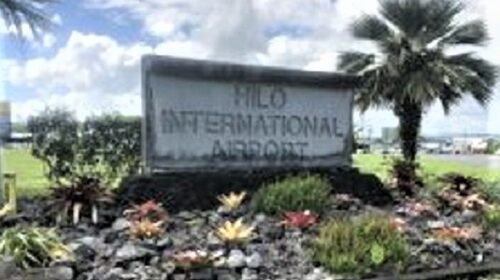Hawaii visitors spending less
Visitors to the Hawaiian Islands spent a total of $8.88 billion in the first half of 2019, a decrease of 2.0 percent compared to the same period in 2018, according to preliminary statistics released today by the Hawaii Tourism Authority (HTA). In the month of June, total visitor spending was up 2.8 percent compared to a year ago.
Tourism dollars from the Transient Accommodations Tax (TAT) helped to fund dozens of community events and initiatives statewide during the first half of 2019, including the Honolulu Festival, Pan Pacific Festival, various King Kamehameha Celebration events, and the LEI (Leadership, Exploration, and Inspiration) Program, which encourages Hawaii high school students to pursue careers in travel and hospitality.
Total visitor spending during the first half of 2019 increased from U.S. West (+2.7% to $3.45 billion) but declined from U.S. East (-1.2% to $2.40 billion), Japan (-2.7% to $1.05 billion), Canada (-1.7% to $635.9 million) and All Other International Markets (-13.6% to $1.33 billion) compared to a year ago.
On a statewide level, average daily spending decreased to $196 per person (-3.4%) due to lower spending by visitors from U.S. West (-2.4% to $176 per person), U.S. East (-1.9% to $209 per person), Japan (-2.2% to $239 per person), Canada (-1.3% to $167 per person) and from All Other International Markets (-6.7% to $229 per person). The decline was largely due to decreases in lodging and transportation expenses.
Total visitor arrivals increased 4.2 percent to 5,191,523 in the first half of 2019, supported by growth in arrivals from air service (+4.0% to 5,115,051) and cruise ships (+15.9% to 76,472). Visitor arrivals by air increased from U.S. West (+9.5% to 2,262,603), U.S. East (+3.6% to 1,171,086), Canada (+1.7% to 310,248) and Japan (+0.8% to 752,693) but declined from All Other International Markets (-7.5% to 618,421). Total visitor days1 increased 1.4 percent. The average daily census2, or number of visitors on any given day was 250,991, up 1.4 percent compared to a year ago.
Among the four larger islands, Oahu recorded increases in both visitor spending (+1.8% to $4.05 billion) and visitor arrivals (+4.6% to 3,047,683) in the first half of 2019 compared to the same period from a year ago. On Maui, visitor spending decreased (-1.8% to $2.61 billion), while visitor arrivals grew (+4.0% to 1,522,043). The island of Hawaii reported declines in both visitor spending (-11.5% to $1.16 billion) and visitor arrivals (-5.1% to 883,346). Kauai also saw decreases in both visitor spending (-5.7% to $961.9 million) and visitor arrivals (-1.7% to 686,236).
June 2019 Visitor Results
For the month of June, total visitor spending statewide rose 2.8 percent to $1.64 billion compared to a year ago. Visitor spending increased from U.S. West (+8.8% to $696.2 million) and U.S. East (+5.1% to $490.9 million), but declined from Japan (-4.9% to $185.0 million), Canada (-1.9% to $36.0 million) and All Other International Markets (-9.4% to $234.1 million).
On a statewide level, average daily spending in June was $196 per person, similar to a year ago. Average daily spending increased from U.S. West (+1.8% to $172 per person) and U.S. East (+1.7% to $211 per person), but declined from Japan (-0.7% to $250 per person), Canada (-3.5% to $159 per person) and from All Other International Markets (-1.4% to $227 per person).
Total visitor arrivals increased 6.1 percent to 951,628 visitors in June year-over-year, comprised of arrivals from air service (+6.1% to 950,931 visitors) and cruise ships (-38.7% to 697 visitors). Total visitor days increased 2.6 percent. The average daily census was 279,087, up 2.6 percent compared to a year ago.
In June, visitor arrivals from air service increased from U.S. West (+11.1% to 454,025), U.S. East (+7.6% to 238,134) and Canada (+1.8% to 19,239) but declined from Japan (-1.8% to 128,134) and from All Other International Markets (-4.5% to 111,285) versus a year ago.
For the month of June, Maui recorded increases in both visitor spending (+12.2% to $486.4 million) and visitor arrivals (+5.7% to 296,427) compared to a year ago. The island of Hawaii also experienced growth in both visitor spending (+4.6% to $203.2 million) and visitor arrivals (+9.3% to 163,712). Oahu saw a decline in visitor spending (-2.1% to $744.7 million) despite growth in visitor arrivals (+4.6% to 568,043). Kauai reported no changes in both visitor spending (-0.1% to $195.0 million) and visitor arrivals (-0.3% to 135,069) compared to a year ago.
A total of 1,182,276 trans-Pacific air seats serviced the Hawaiian Islands in June, up 3.5 percent from a year ago. Air seat capacity increased from U.S. East (+9.4%) and U.S. West (+8.2%), offsetting fewer seats from Oceania (-14.4%), Canada (-9.8%), Japan (-7.2%) and Other Asia Markets (-6.8%).
Other Highlights:
U.S. West: In the first half of 2019, visitor arrivals increased from the Pacific (+10.4%) and Mountain (+8.4%) regions. Stays in hotels (+10.5%), timeshares (+4.2%) and condominiums (+3.3%) increased. More visitors stayed in rental homes (+12.0%) and bed and breakfast properties (+7.2%) compared to a year ago. Daily visitor spending declined to $176 per person (-2.4%) as a result of decreases in lodging, transportation, and entertainment and recreation expenses, while spending on food and beverage and shopping was similar to last year.
In June, growth in visitor arrivals from the Pacific region (+13.0%) was driven by increases from California (+14.5%), Oregon (+12.5%) and Washington (+4.2%). Arrivals also grew from the Mountain region (+10.5%), supported by more travelers from Arizona (+13.9%), Utah (+10.6%), Nevada (+7.5%) and Colorado (+6.1%).
U.S. East: In the first half of 2019, visitor arrivals increased from most regions except for the Mid Atlantic (+0.1%) region, which was flat versus a year ago. Stays in hotels (+1.5%) and condominiums (+1.2%) increased. There was growth in rental home stays (+11.0%), but timeshare stays (-2.3%) were down compared to a year ago. Daily visitor spending declined to $209 per person (-1.9%), largely due to decreases in lodging and transportation expenses.
In June, visitor arrivals increased from all regions, highlighted by growth from the two largest regions, South Atlantic (+7.6%) and East North Central (+6.0%), versus a year ago.
Japan: In the first half of 2019, stays in hotels (+0.4%) were comparable to a year ago. More visitors stayed in timeshares (+6.4%) and with friends and relatives (+5.9%), while fewer visitors stayed in rental homes (-4.8%) and condominiums (-0.9%). Daily visitor spending declined to $239 per person (-2.2%), primarily due to lower lodging and transportation expenses.
Canada: In the first half of 2019, visitor stays in hotels (+0.7%) increased slightly compared to the same period last year. More visitors stayed with friends and relatives (+7.4%), in rental homes (+6.7%) and in timeshares (+3.1%), but fewer visitors stayed in condominiums (-4.2%). Daily visitor spending declined to $167 per person (-1.3%), mainly due to lower lodging expenses.
[1] Aggregate number of days stayed by all visitors.
[2] Average daily census is the average number of visitors present on a single day.




